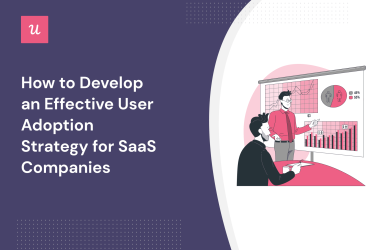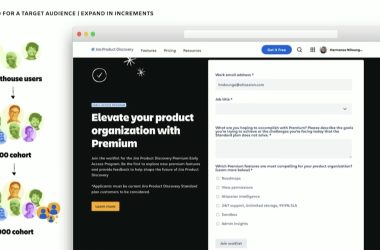‘It’s super important at the senior exec level to be fully aligned and always speak the same language.’ Christian ‘CJ’ Jessen, CFO, Formalize
Modern SaaS CFOs are strategic and growth-minded. From their unique position in the company, they have a crucial role in helping GTM leaders achieve their growth targets.
But for the relationship to work harmoniously, GTM leaders need to know how their CFO thinks, understand their CFO’s pressures, and speak their CFO’s language.
We spoke with Christian ‘CJ’ Jessen, CFO at Formalize a (European-based B2B compliance platform currently deploying its €15M Series A investment), to learn how GTM leaders can collaborate smoothly with their CFO. Here are 5 key lessons.
1. Consider profitability vs growth
‘The balance between growth and profitability is always top of mind for CFOs’.
According to CJ, CFOs are always chasing the optimum level between achieving profitability and hitting growth targets. It’s their job to work with GTM leaders to make this happen.
As there’s huge momentum in Formalize’s market right now, they’re currently prioritising growth over profitability. But, even with a growth preference, CJ still approaches every potential GTM investment from a first principles approach. “If I put in $1, how many dollars do I get out? What does that look like with retention? How quickly do I get my CAC back?”
The bottom line for GTM leaders? Weigh up the business case of each investment before involving the CFO.
2. Align on common metrics
‘It all starts with revenue. That’s always our North Star.’
Even if you’ve agreed on maximising growth, you still need to know the constraints. At a base level, that means aligning on a common set of metrics with revenue always at the top, but the metrics will change depending on your growth stage and strategy. For instance, early stage SaaS finance leaders will be more concerned about cash flow while scaling-stage CFOs will be more interested in unit economics, LTV and CAC.
At Formalize, the GTM leaders are “very fluent” in CAC metrics, so instead of just asking for budget, they outline each investment case in relation to the CAC ratio. For example, they will state:
- What they want to invest in (i.e. a particular geography or motion).
- The CAC ratio they aim to hit with this investment.
- The timeline to achieve it.
The bottom line for GTM leaders? Be fluent in CFO metrics, especially CAC ratio.
3. Take heed of the CFO’s constraints when planning
‘Overall, I want to see our company CAC payback at this level. How do we build up to that?’
When it comes to GTM, today’s SaaS CFOs will think about the funnel, the TAM, and the cost ratios before making decisions to suit the company’s growth objectives. But it’s still not the CFOs job to micro-manage. They will not tell you how to operate your department, but instead set the boundaries and let you come up with the plan.
For instance, CJ always starts with the perspective of the next 12 months and the top line target before asking his revenue leaders what they can achieve. After his revenue leaders have devised a bottom-up plan, he will then work with them to verify it.
The bottom line for GTM leaders? Find ways to grow within the CFO’s boundaries.
4. Prepare for healthy friction
‘You will always have a little bit of natural friction.’
The modern CFO is a willing GTM partner, using their knowledge of the company’s finances to help GTM leaders realise their plans. For example, Cosmin Pitigoi, CFO at Flywire, believes CFOs should “become the right hand to the sales team,” helping sales leaders better understand the margins and devise appropriate pricing strategies.
But that doesn’t mean the CFO will agree to everything you want. According to CJ, there’s “always healthy friction” between himself, the CRO and CMO because of the dynamic of the relationship. The solution? Be candid in management discussions and find mutually beneficial trade-offs.
The bottom line for GTM leaders? Accept budgetary trade-offs to help reach common goals.
5. Generate more than the CFOs budget
‘We very rarely miss our budget targets because the sales targets are always built with a little bit of elasticity.’
As GTM leaders, your role is to bring revenue into the company – be it indirectly through Marketing and Customer Success or directly through Sales and Revops. The CFO then uses this revenue for budgeting, financial planning and forecasting.
To synchronise the CFO’s revenue expectations with actual revenue generation, Formalize’s FP&A and RevOps teams work very closely together with two targets: a financial budget target and a revenue target that is 20% above that. The result? The CRO rarely misses the financial target even during tricky periods.
The bottom line for revenue leaders? Plan to bring in more than the CFO’s needs for leeway.
Get more GTM advice from SaaStock
This interview with CJ is part of an upcoming SaaStock series where we deep dive into the proven GTM tactics that work in the AI era. Subscribe to our YouTube channel to stay in the loop.
Check out some of our other intrviews with GTM leaders below:
- How to build and scale a B2B SaaS GM strategy (with Dee Coakley, CEO and Co-founder at Boundless)
- GTM efficiency, AI, and the future of SaaS sales with Jen Igartua (CEO at Go Nimbly)
- Three actionable GTM insights from SaaStock USA (ft. April Dunford, David Politis, and Chris Walker)
- 5 key moments to drive revenue growth and customer retention (with Ashley Grech, CRO at Xero)





